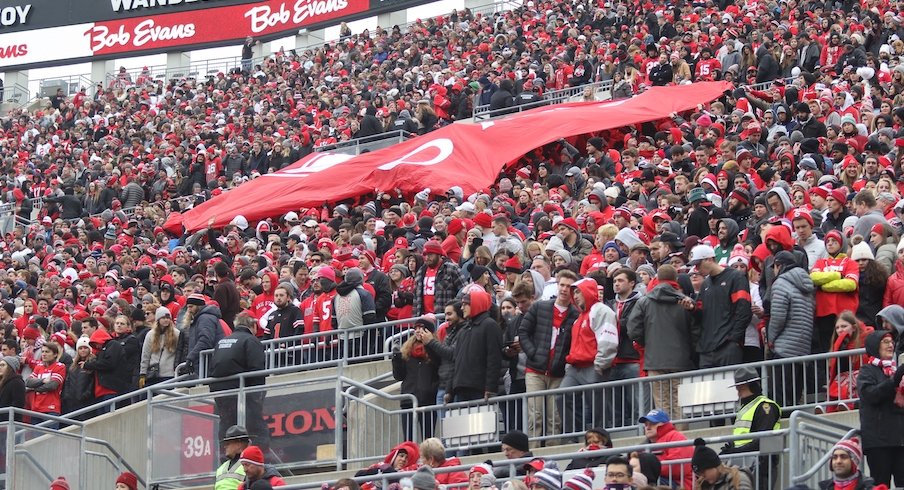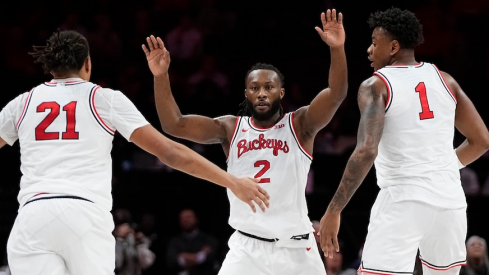A number of theories have been suggested for why the Big Ten opted to go to a conference-only schedule this fall.
It’s true, Ohio State athletic director Gene Smith said on Thursday afternoon, that there’s a comfort in traveling to other conference schools to play in familiar stadiums with locker rooms they’ve used in the past. Also, the Big Ten will be able to put in place “standardized protocols,” he said, presumably to control travel, sanitation and testing.
But those weren’t the deciding factors, Smith said, that ultimately prompted the Big Ten's decision on Thursday.
“The biggest thing for us was just the opportunity for us to create the flexibility,” Smith said on a teleconference. “If we're able to play in September and something occurs in late September or early October, we can pause. We can hit the pause button and provide a window of opportunity for our student-athletes not to be put at risk. We can move games. If we're scheduled to play somewhere else and an outbreak occurs in that environment and that school has to shut down, then we can change games. The flexibility – I can't say that enough – is significant.
“To your point around health and safety, it just gives us that ability to say you know what, it's not safe here in Franklin County, so Illinois can't come here. So, what does that mean? We'll have the ability to address that.”
Smith went from being “cautiously optimistic” in May to currently feeling downright worried that a football season won’t be able to go forth as planned this fall.
For that reason, the Big Ten took the step of cutting out all non-conference games from each of its members’ schedules in 2020, which he said gives the conference the “flexibility and control to handle disruptions if we're able to start a season.”
“We just felt that by playing our conference games, having September available to us, gave us flexibility, control,” Smith said. “We can be nimble. We can adjust. So that's how it came to us.”
Because of the decision, the Buckeyes will no longer open with Bowling Green, face Oregon on the road or play host to Buffalo. All three games have been canceled.
Instead, Ohio State – and the other 13 Big Ten teams – will play a yet-to-be-determined Big Ten-only slate of games. Smith said the goal is for each team to play 10 games, calling it the “preference” of those in the conference, though that hasn’t been finalized.
“We have a scheduler in the Big Ten and we'll talk about our planning principles and we'll schedule games,” Smith said. “Obviously the situation, from a competitive equity point of view, everybody won't be happy. But the reality is you get a chance to compete and allow your kids a chance to play, so we have to set aside to some degree competitive equity. So I don't see a challenge with scheduling the games. We have to determine how many. We have to determine the divisional issues, like what was raised earlier and how we want to deal with that. We have to determine how many games we want to preschedule.”
Smith views much of the benefit of a conference-only schedule as being the ability to move games around. He isn’t even sure this fall’s entire schedule will need to be finalized before kicking off the opener.
Perhaps the most pressing issue is when the Big Ten will be able to begin its 2020 season.
On Thursday, Smith reiterated the need for teams to have a six-week lead-up to the season in order to get underway in a fashion that allows for players to get back to action as safely as possible. They could begin that process as soon as July 24 with the idea that the Big Ten-only season would open on Sept. 5. Or, they could shift it forward one week or back several weeks.
By getting rid of all non-conference games, the Big Ten has the ability to adjust its start date for the season.
“That's another issue we'll have to talk about when we get into this: The flexibility of starting Week 0, Week 1 or Week 2 based upon whatever the virus does,” Smith said. “But we have to make that decision in a timely fashion because we would have to push back that six-week window. If we decided that we're going to start September 12, we would have to push back our six-week window.”
Next week, Smith said, the Big Ten will delve into creating the schedule, determining the number of games that’ll be played and figuring out whether the Buckeyes will be able to start practicing in non-voluntary fashion on July 24.
By axing all out-of-conference games, the Big Ten bought itself some time. Now, the conference will see if can manufacture a season with additional flexibility.


